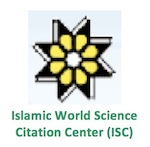


Google Scholar citation report
Citations : 5373
ASEAN Journal of Psychiatry received 5373 citations as per google scholar report
ASEAN Journal of Psychiatry peer review process verified at publons
| Journal Name | ASEAN Journal of Psychiatry (MyCite Report) | ||||
|---|---|---|---|---|---|
| Total Publications | 456 | ||||
| Total Citations | 5688 | ||||
| Total Non-self Citations | 12 | ||||
| Yearly Impact Factor | 0.93 | ||||
| 5-Year Impact Factor | 1.44 | ||||
| Immediacy Index | 0.1 | ||||
| Cited Half-life | 2.7 | ||||
| H-index | 30 | ||||
| Quartile |
|
- Anxiety Disorders
- Behavioural Science
- Biological Psychiatry
- Child and Adolescent Psychiatry
- Community Psychiatry
- Dementia
- Community Psychiatry
- Suicidal Behavior
- Social Psychiatry
- Psychiatry
- Psychiatry Diseases
- Psycho Trauma
- Posttraumatic Stress
- Psychiatric Symptoms
- Psychiatric Treatment
- Neurocognative Disorders (NCDs)
- Depression
- Mental Illness
- Neurological disorder
- Neurology
- Alzheimer's disease
- Parkinson's disease
Abstract
Spectrum of Mri Findings in Pediatric Epilepsy–Medical and Surgical Causes of Epilepsy in Children And its’ Radiological Correlation
Author(s): Ojaswi b khandediya, Sujoy S Mani, Priti Kapoor, Vishal A SinghObjectives: Epilepsy is the common condition encountered in both adults and pediatric population. It occurs as a result of various spectrum of etiology ranging from infections to tumors. EEG and Neurosonogram can characterized the type of epilepsy, however, imaging is the only tool to identify the lesion, its location, extent and resection possibility. CT was the only modality before the era of MRI. However, CT was only used to indentify the lesion with hemorrhage and calcification. It is having the disadvantage of having poor spatial resolution and using radiation. The era of MRI has changed the imaging due to its higher spatial resolution, gray white matter differentiation, status of myelination and non utilization of radiation. Purpose: The aim of study was to detect and characterize various lesions causing epilepsy in pediatric age group (0–12 years) and also to detect frequency with which they occurred using MRI. Methods: The study was performed on 50 children under the age of 12 years over a period of 1 year who presented with epilepsy. Patients with trauma and febrile seizure disorders were excluded. Conventional and contrast MRI was performed in all cases and lesions were characterized in location, signal intensity, and other features. Results: The mean age group of the study population was 1-5 years. Generalized seizures constituted the major seizure group. Our study shows infection as the most common etiology followed by Mesial temporal sclerosis and Focal cortical dysplasia. It was followed by neoplastic etiology, phacomatosis and demyelinating diseases. Conclusion: MRI is the imaging modality of choice in the evaluation of pediatric patients presenting with epilepsy. Proper MRI seizure protocol helps to establish the correct diagnosis, plan the management according to diagnosis as well as helps in prognosis.


























